We are Wholesaler, Trader, Supplier, Dealer of Cutting Edge Artus 10 Spectrometers from Pune, Maharashtra, India, and We regularly serve various locations across Pan India.
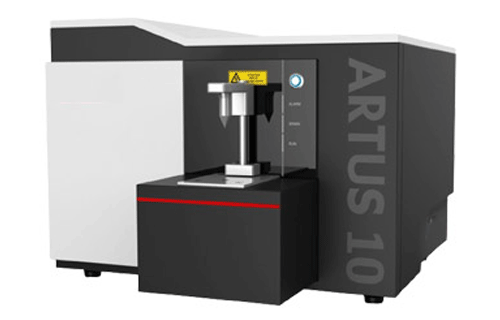
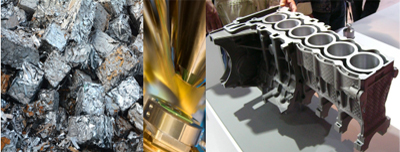
ARTUS 10 - Innovative Spectrometers For Metals Analysis
The ARTUS 10 is the first direct reading spectrometer using CMOS and thermoelectric cooling technology. It is the ideal spectrometer for industries that process incoming steel, non-ferrous, unknown and composite metals material for in-process testing and final quality control. It meets the needs of users looking for a high-end solution.
Get in TouchCustom CMOS Sensor Technology: For the Ultimate in Spectrometer Performance
CMOS image sensors offer extremely low noise, rapid frame rates, wide dynamic range, high quantum efficiency and high resolution. The newly designed ARTUS 10 includes a new scientific-grade CMOS sensor which enables shorter analysis time in seconds. The reduced analysis time means operator process time is reduced. The customised sensor detector gives improved resolution of the inpsection system.
By using Optimal Element-Oriented (OEO) technology; any pixel position signal can be extracted separately to achieve independent parameter optimisation and acquisition analysis for each element. UV elements (C, P, S, N) are easily detected.

Added Algorithms: For More Efficient Detection
The OEO and Real Time Management & Control (RTMC) algorithms make for a more efficient performance in CMOS detection. The intelligently matched spark discharge waveform results in improved detection of the variable elements. The intelligent algorithms eliminate background interference for enabling optimal analysis performance. Abberant Spark Removed (ASR) technology eliminates abnormal sparks for improved analytical accuracy.
The ARTUS 10 accommodates for a stronger abnormal shape adaptability. This makes it easy to deal with sample defects such as porosity. This reduces the probability of operator error during analysis.
For filaments as small as 0.1mm diameter and large pieces up to 200g can be measured. For samples witih varying shapes such as tubes or wire; relative sample holder solutions are available.
Multi Cmos Detector Design
The ARTUS 10 has an extremely high detection sensitivity system. Why? When the CMOS photosensitive detector is combined with the dual optics and refrigeration system, a verification limit of parts per million can be achieved. The addition of a Thermal Electric Cooler in some models, means lower detection levels are reached.
- Visible optical system
- Excitation system
- Ultraviolet optical system
- Digital light source system
- Detector refrigeration system (optional)
- Data processing system
- Argon control system
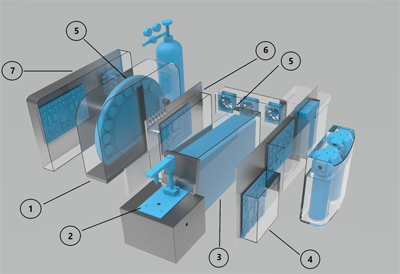
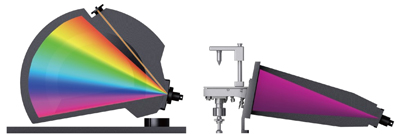
Dual Optical System Design
The ARTUS 10 dual optical system design has a dual wide spectral range and high-grade resolution. This enables more accurate analysis of non-metallic UV elements (C, P, S, N). There are no vacuum pump moving parts, light distortion or oil contamination.
The ARTUS 10 thermostatic optical system temperature field uses the best heating components. Its single point ambient temperature is less than 0.1 degrees. The optimised thermal design scheme delivers responsive temperature compensation.
High Thermal Stability
- High thermal stability guarantees a stable optical system and equipment data.
- Options to choose from universal heating components.
- Optimised thermal design with intelligent temperature compensation algorithms.
- Each optical cell is tested for thermal stability (as shown on the left)
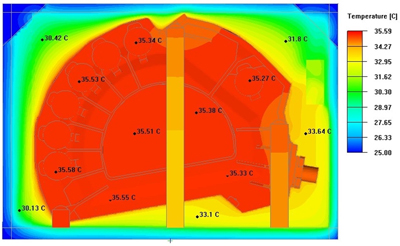
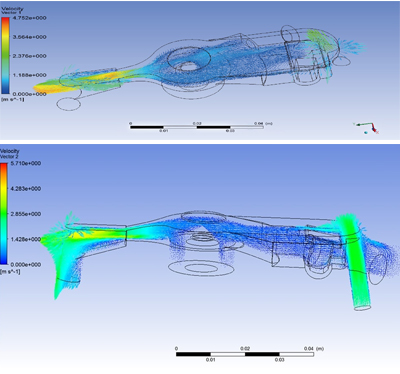
Gas Path Fluid Design
The ARTUS 10 exciting gas channel fluid design provides a uniform-filling of the argon gas in a shorter period of time. This means a shortened excitation time and improved efficiency. A self-cleaning function in the chamber cavity, reduces continuous maintenance of the excitation area.
The ARTUS 10 light chamber is consructed from a die-cast aluminium case which receives 4 levels of stress relief treatment; ensuring long-term stability of the spectral position. The precise design of the airflow path makes everything more stable.
Benefits:
- The argon can uniformly fill the excitation table in the shortest time.
- Reduction of sample excitation time, which improves detection efficiency and saves argon.
- The cavity self-cleaning function reduces the excitation table maintenance times.
Why Just Engineer When You Can Pioneer!
Excitation Stand
Optimised design of the excitation stand and lens structure
Lens maintenance
Improved design means tool-free access of the UV and visible optic lenses, i.e. no screws.
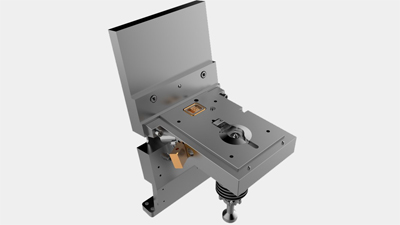
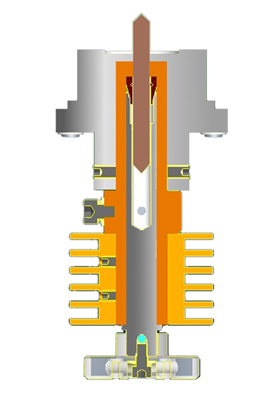
Electrode Clamp
Elimination of old-fashioned "thimble type"electrode fixtures
"Clasping Type" electrode locking device
Benefits:
Avoid electrode movement caused by "thimble" fixing
Better perpendicularity
Improved data stability
Interact With A More Intuitive Interface
Benefit: A-Care
When the operator is still unclear about the abnormal state of the equipment, the A-Care Cloud service system will have transmitted the abnormal state of the equipment to the ARUN cloud server. An A-Care Engineer will be able to analyse the equipment status in order to resolve the any issue.
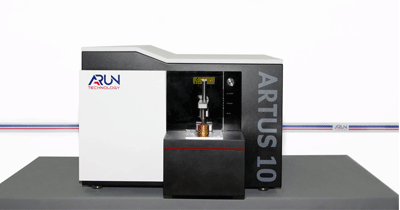
Improved Software Design
-

Spectrometer + Internet single interface
-

A-Care Cloud Service
-

Recognised cloud interconnection
-

Instant automatic notification of device anomalies
-

Software upgrades and maintenance can be performed remotely
-

To able to switch type of samples there is no need to switch the interface.
-

Single software interface enables users to learn the system quickly and efficiently.
-

Graphical design of functional modules (figure below)
Features include
-

Real-time monitoring of equipment status allows for problems to be identified immediately, so operators will not be at a loss.
-

Modular monitoring allows the operator to visual check the status of each module.
-

The single software interface enables users to learn the system quickly and efficiently.
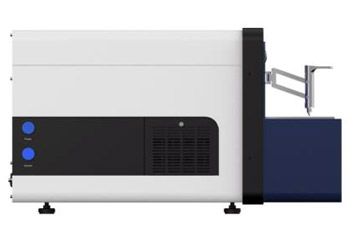
| Weight and Dimensions | |
|---|---|
| Weight | 90kg |
| Packing Weight | 140kg |
| Instrument size: | 706 x 513 x 810mm |
| Packing size: | 980 x 990 x 770mm |
| Electrical requirements | |
| Line input | 90 to 260 Volts AC 50-60 Hz |
| Automatic Voltage Stabilization | |
| Environmental requirements | |
| Operating temperature | 10 to 30oC |
| Storage temperature | -0 to 70C |
| Optical system | Paschen-Runge |
|---|---|
| Wavelength range | ARTUS 10 ultimate Plus: 130-700nm |
| (with TEC option for better detection analysis of purer materials) | |
| ARTUS 10 ultimate: 130-700nm | |
| ARTUS 10 standard: 170-700nm | |
| ARTUS 10 Basic: .200-700nm | |
| Peak power | 1200W |
| Working humidity | (20-80) %RH |
| Argon purity requirements | > 99.999% |
| Argon inlet pressure | (0.45-0.65) MPa |
| Argon flow | < 3.0L/min |
| Excitation table aperture | 13m m |
| MODELS OF ARTUS 10 | INSTRUMENT PART NO. | ANALYTICS CALIBRATION | FIELDS OF APPLICATION |
|---|---|---|---|
| Ultimate Plus ARTUSIO-ULT-PLUS | AA1040019UP | All optical system refrigeration can be analysed: Fe, Al, Cu, Ni, Zn, Mg, Co, Ti, Sn, Pb plus other 10 kinds of matrix, more than 40 kinds of elements. | 10 kinds of substrates more than 40 elements of ultrapure metal impurity analysis acid-soluble inclusions analysis |
| Ultim ate ARTUSIO-ULT | AA1030019U | Can analyse Fe, Al, Cu, Ni, Zn, Mg, Co, Ti, Sn, Pb and other 10 kinds of matrix more than 40 kinds of elements. | high purity metal impurities metallic materials containing (N) elements |
| Standard ARTUSIO-STD | AA10100195S | Can analyse Fe, Al, Cu, Ni, Zn, Mg, Co, Ti, Sn, Pb and other 10 kinds of matrix, more than 40 kinds of elements. | high purity metal impurities conventional metal materials |
| Basic ARTUSIO-BASIC | AA1050019B | Can analyse Al, Cu, Zn, Mg, Sn, Pb and other non-ferrous metal materials. | high purity metal impurities non-ferrous metals analysis |

